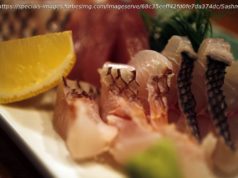Mr. Toyoda led Toyota’s first factory in North America, bringing with him a Japanese approach to manufacturing and labor relations.
Tatsuro Toyoda, the American-educated son of the founder of the Toyota Motor Corporation and a major figure in the company’s international expansion, died on Dec. 30. He was 88.
The cause was pneumonia, the company said on Saturday in announcing his death. It did not say where he died.
Mr. Toyoda served as Toyota’s seventh president, from 1992 to 1995, and led the company’s first American factory, an unprecedented collaboration with General Motors that fused Japanese factory methodology with the American labor force and union system.
The factory, called New United Motor Manufacturing Inc., and based in Fremont, Calif., led to far-reaching changes in how American factory work was done and spurred Toyota’s international growth. It produced the Chevrolet Nova and the Toyota Corolla, among other vehicles, before closing in 2010.
“What the Americans learned because of Tatsuro’s leadership was a totally different way of doing manufacturing,” said Jeffrey Liker, the author of “The Toyota Way” and a professor of industrial and operations engineering at the University of Michigan. “And for Toyota, it was one of the keys to their being a global company that sells ten million vehicles a year. It clearly paid off thousands of times over.”
Born on June 1,1929, in Nagoya, Japan, Mr. Toyoda was the grandson of Sakichi Toyoda, who started Toyoda Automatic Loom Works in 1926. His father, Kiichiro Toyoda, founded the Toyota Motor Company in 1937. The company name was changed to Toyota because that was considered luckier.
After receiving a degree in mechanical engineering from the University of Tokyo, Tatsuro Toyoda moved to the United States, where he received an M. B. A. from New York University. One of his professors was W. Edwards Deming, an expert in quality control who influenced the Japanese approach to manufacturing. Mr. Toyoda also studied at Columbia University’s International House.
“Mr. Toyoda smiles when he says that his career naturally will be in business,” a reporter visiting the International House wrote in 1958.
He worked for Toyota in Australia, North America, and Africa, returning to Japan in 1974 as a director.
In the early 1980s, Toyota wanted to start manufacturing in the United States, and Mr. Toyoda was tapped to head the effort. The goal was for Toyota to set up a factory with an American partner, teach them the Japanese way, even build the American brand’s cars, and learn how to manage American employees, as well as dealing with voluntary import quotas. General Motors agreed to the partnership.
In 1983,Mr. Toyoda was named president and chief executive of the joint company. American workers were sent 30 at a time for several weeks of training in Japan.
“Both companies are totally committed to making New United Motor a successful model of industrial cooperation between our two nations,” Mr. Toyoda said at the opening ceremony .
From the beginning his approach was different. He spoke about collaborating with the United Auto Workers union in a way that was unusual at the time: “In a way, our company is a cooperative effort between Toyota, G. M. and the U. A. W.” Mr. Toyoda said.
The changes Mr. Toyoda brought by putting in place the Toyota Production System were radical. In American car factories, workers were never supposed to stop the production line when they discovered problems; Toyota encouraged the practice and rewarded workers for finding mistakes or ways to improve the process.
While the Japanese approach was to take the doors off a car to work on the interior and put the doors back on further down the line, American executives had resisted this technique and said it was too hard to fit the doors back on. In Fremont, the line frequently stopped, and the doors were removed.
Mr. Toyoda favored an egalitarian workplace culture, eschewing executive parking garages and dining rooms. “I’ve seen Mr. Toyoda park way out in the parking lot when he’s arrived late,” said Joel Smith, the top official of the United Automobile Workers unit at Fremont. And he kept a very low profile throughout his career.
“Here was this incredibly powerful person, a global titan changing the manufacturing landscape, and so understated, so deeply rooted in humility that there’s barely anything written about him,” said David Magee, the author of “How Toyota Became #1.” “He was the antithesis of the way it was done in the U. S. at the time where your car leaders were bigger than life.”
Mr. Toyoda was named president of Toyota Motor Company in 1992 when the yen was rising and Japan was entering a long economic slump. He began looking for ways to cut costs and modernize factories.
“Quietly, behind the scenes, he was a living example of the Toyota Way at a time when Toyota was growing very fast and needed a moral compass to keep them on the path,” Mr. Liker said.
In 1995 after being hospitalized with high blood pressure, Mr. Toyoda, then 66, stepped down and was replaced by Hiroshi Okuda. In 2009, the company named Mr. Toyoda’s nephew, Akio Toyoda, as its president.
He is survived by his wife, Ayako Toyoda and their son.






